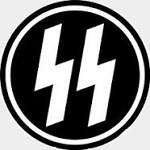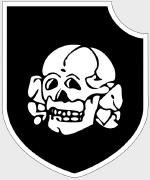Forces of Valor 80041 German Kfz. 70 Krupp Protze 6x4 Cargo Truck - 3.SS Panzer Division "Totenkopf", Eastern Front, 1941 (1:32 Scale)
"If the tank succeeds, then victory follows."
- Major-General Heinz Guderian, "Achtung Panzer!"
 The Krupp Protze Kfz. 69 was a light cross-country truck that was developed by Krupp AG in 1930. Delivered to the German national defence forces in 1933, it helped form the concept of motorized units for both the army and the air force and was very popular with the troops due to its good driving characteristics. It served as both a personnel carrier and as a tractor for the 3.7 cm anti-tank gun, and was widely used throughout Europe and Africa.
The Krupp Protze Kfz. 69 was a light cross-country truck that was developed by Krupp AG in 1930. Delivered to the German national defence forces in 1933, it helped form the concept of motorized units for both the army and the air force and was very popular with the troops due to its good driving characteristics. It served as both a personnel carrier and as a tractor for the 3.7 cm anti-tank gun, and was widely used throughout Europe and Africa.
Pictured here is a 1:32 scale replica of a German Kfz. 70 Krupp Protze 6x4 cargo truck in field grey that served on the eastern front during 1941 with the 3.SS Panzer Division "Totenkopf".
Sold Out!
Dimensions:
Length: 7-1/2-inches
Width: 2-inches
Release Date: June 2012
 Historical Account: "Motor Transport" - In NATO and most other western countries, motorized infantry is infantry which is transported by trucks or other motor vehicles. It is distinguished from mechanized infantry, which is carried in armored personnel carriers, infantry combat vehicles, or infantry fighting vehicles. In Russia and the former Soviet Union the term motostrelki (Мотострелки in Russian) is used to indicate mechanized infantry, and during the Korean War this usage prevailed in all Warsaw Pact countries.
Historical Account: "Motor Transport" - In NATO and most other western countries, motorized infantry is infantry which is transported by trucks or other motor vehicles. It is distinguished from mechanized infantry, which is carried in armored personnel carriers, infantry combat vehicles, or infantry fighting vehicles. In Russia and the former Soviet Union the term motostrelki (Мотострелки in Russian) is used to indicate mechanized infantry, and during the Korean War this usage prevailed in all Warsaw Pact countries.
Motorizing infantry is the first stage towards the mechanization of an army. Civilian trucks are readily adaptable to military uses of transporting soldiers, towing guns, and carrying equipment and supplies. This greatly increases the strategic mobility of infantry units, which would otherwise rely on marches or railroads. In practice, armies have found it advantageous to develop trucks to military specifications, such as all-wheel drive, in order to have vehicles that function reliably in extremes of weather and terrain.
Motorization provides no direct tactical advantage in combat, because trucks and jeeps are vulnerable to artillery and small arms fire. For winter and mountain use, light tracked vehicles were employed, the Swedish made Snow Trac and Bandvagn 202 both found service with the British Royal Marines. But it does increase the infantry's flexibility, because motorized elements can travel with their own integral support weapons (heavy machine guns, mortars and artillery, anti-tank weapons, etc.). The disadvantage of motorization is that the formation becomes dependent on supplies of fuel.
The British created the Experimental Mechanized Force between the wars to test the capabilities of all-arms formations of mechanized units, this included motorized infantry.
The speed advantages of motorized infantry first became important in World War II in the German Blitzkrieg. While no more robust than regular infantry moving on foot, its increased speed became decisive in the Blitzkrieg strategy because it could follow the panzer forces and defend its flanks. Notwithstanding the obvious advantages of motorization, most countries opted only for partial motorization of their infantry because of the cost and logistical implications caused by the deployment of so many vehicles. Even large armies were affected by these factors. The bulk of German and Soviet infantry remained on foot, while U.S. infantry divisions could, if needed, redirect the activities of enough trucks to motorize an infantry regiment. Likewise, infantry divisions of the UK Britain and its Empire could motorize chosen subordinate units, but infantry advanced on foot in most cases.
Currently in the post Cold War world, motorization of infantry is becoming more popular since humanitarian deployments are more prevalent with troops acting as quasi-police units. There is also a trend for motorized infantry to be up-armored due to the situation of insurgency and terrorism in post-invasion Iraq.





 FOV Krupp Protze
FOV Krupp Protze 


